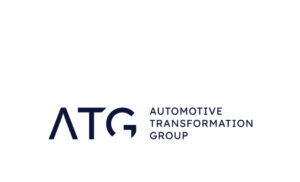Adequate Liquidity Becoming Vital for Small Businesses

With fresh restrictions for businesses threatened every day and growing speculation around future lockdowns many small businesses are struggling to know where to turn. The fresh restrictions imposed are a massive setback for UK small businesses, with Omicron most likely not being the last Covid variant to emerge – businesses must create consistency in their approaches to combat this variant and prepare themselves for the future.
The pandemic has provided a very clear lesson to many SMEs on the need of adequate liquidity on the balance sheet to weather various levels of business disruption. With the Omicron variant it’s possible we may be heading into a year filled with various levels of disruption, it is therefore necessary to determine the liquidity required for SMEs to weather the disruption.
The challenge, however, is understanding how much liquidity the SME needs, it becomes even more complex when the current level of liquidity available to the SME is below what is needed.
Reece Tomlinson, founding Partner of RWT Growth discusses:
“In a business disruption event, it is likely that revenues are going to be impacted and non-variable costs (fixed costs) are going to remain steady for the immediate future until longer term cost-cutting can occur. Assuming this is the case, on a monthly basis it is necessary to calculate various levels of revenue and gross profit from revenue against fixed operating costs that the company will invariably need to incur. SMEs need to prepare a worst-case scenario revenue forecast as it pertains to revenue disruption. Next, multiply the monthly impact of operating at the forecasted levels of revenue by a disruption of 6 months. The formula, on a per month basis, is: (Monthly Worst Case Scenario Revenue – Monthly Variable Costs – Monthly Fixed Costs) x 6 Months = Liquidity Required. It is important to note that for SMEs with inventory that can spoil to consider an additional cost that needs to be factored into this calculation – the cost of replacing spoiled inventory.
“After arriving at the liquidity required to weather the level of business disruption, it then becomes necessary to figure out whether the SME has this level of liquidity available. The simplest method of doing so is to determine how much cash is available for use. Next, deduct the current level of liquidity from the cash balance. The difference, if negative, makes up the liquidity shortfall the SME is going to need to bridge.
“If a liquidity shortfall exists, then the SME needs to identify ways of bridging this liquidity gap. There are a few ways of doing this, however the simplest is to identify what debt facilities the SME has available at its disposal. The company may have unused credit lines or draw down facilities they can access as a source of capital should it be required. If not, does the SME have the ability to access financing? If the SME can obtain new credit facilities, then it is prudent to do so, all SMEs should have a line of credit available even if they intend to never need it. Unfortunately, COVID-19 has already impacted a lot of SMEs and reduced their debt service capabilities, which inherently makes it more challenging to obtain new debt. And so, for SMEs in this position, a more creative solution to accessing liquidity is needed. Notwithstanding major cost cutting efforts, these types of solutions can include some, or all, of the following:
Using payables as a cash flow bridge can be an effective way of reducing the cash spend of the SME. By extending the payment timelines of payables that the SME has accrued, the company can increase the amount of free cash flow available and thereby increase liquidity. Whilst this option can, from our experience, free up a lot of cash flow, it needs to be managed strategically and professionally to ensure the relationship with the suppliers, who provided credit to the SME, is not tarnished and/or the capacity of the SME to access additional goods is not materially impacted.
Offering incentives for clients to pay receivables early can improve cash flow by ensuring cash comes to the SME quicker than it otherwise would have without an early payment incentive.
Seeking a formal deferral of debt principal and interest payments from the SME’s lenders, would free up cash flow and increase liquidity available for the company to utilize in order to weather the disruption they may face.
“Finally, any business disruption that does not have a clear and distinct potential recovery should warrant more drastic and strategic cost cutting efforts to ensure the long-term viability of the company”.





